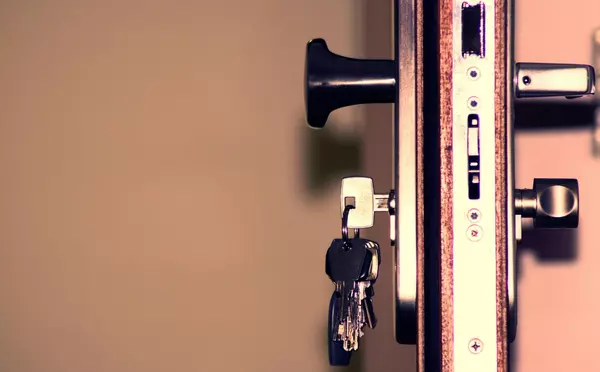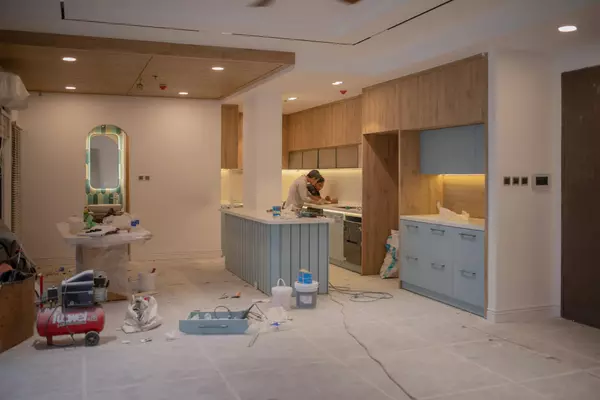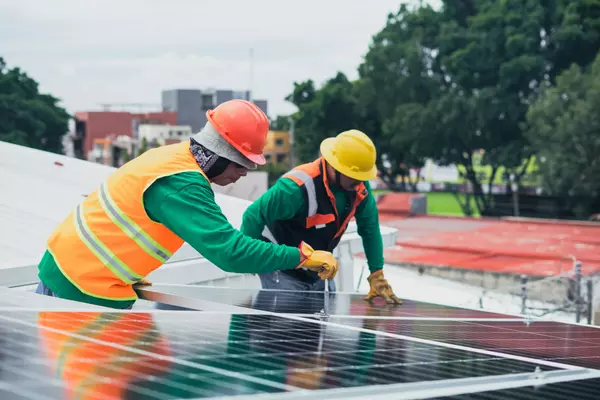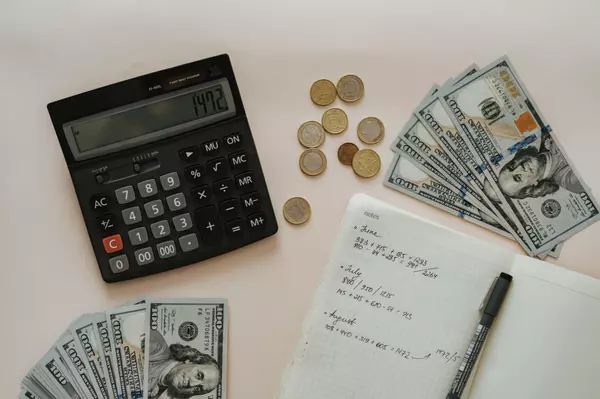Real Estate and Sustainability: How Green Building Projects Benefit Communities

In today’s world, sustainability is no longer a trend but a necessity. As communities grapple with environmental challenges, the real estate industry is stepping up with innovative solutions that prioritize sustainability. Green building projects are leading the charge, offering benefits that extend far beyond reducing a property’s carbon footprint. At REALgratitude, we’re committed to helping homeowners and real estate investors understand the profound impact these sustainable projects can have on the health and vitality of their communities.
This blog will explore the various ways that sustainable real estate practices not only help the environment but also foster stronger, more resilient communities.
The Environmental Impact of Green Building
At the heart of green building projects is the goal of minimizing environmental damage. By utilizing eco-friendly materials, energy-efficient systems, and sustainable design principles, green buildings aim to reduce resource consumption and waste. This benefits communities in numerous ways:
-
Reducing Carbon Footprint Energy-efficient homes and commercial buildings reduce greenhouse gas emissions by using less energy for heating, cooling, and electricity. This helps reduce the community's overall carbon footprint, contributing to the fight against climate change and air pollution.
-
Water Conservation Green buildings often feature water-saving fixtures and systems like low-flow faucets, greywater recycling, and rainwater harvesting. These help conserve local water supplies, an increasingly crucial consideration in drought-prone regions.
-
Waste Reduction By incorporating sustainable building materials, developers reduce the need for new raw materials, minimizing waste. Recycled materials, reclaimed wood, and eco-friendly insulation are all examples of ways to reduce environmental impact during construction.
Economic and Social Benefits for Communities
Beyond the environmental advantages, sustainable building projects offer significant economic and social benefits for local communities. Green buildings often contribute to long-term savings and greater community resilience.
-
Lower Utility Costs for Residents Energy-efficient homes save residents money on utility bills over the long term. Solar panels, energy-efficient windows, and high-performance insulation reduce the demand for energy, leading to lower heating and cooling costs. These savings allow families to invest more back into their local economies.
-
Increased Property Values Properties built with sustainable features often see higher property values due to their appeal to environmentally-conscious buyers. Communities with green buildings tend to become more desirable, attracting new residents and businesses that value sustainability.
-
Healthier Living Spaces Green buildings prioritize indoor air quality by using non-toxic materials and proper ventilation systems, reducing pollutants that can harm human health. Communities with healthier living spaces see lower rates of respiratory illnesses and allergies, contributing to overall well-being.
-
Job Creation in the Green Economy Green building projects create demand for new skills and expertise, from eco-friendly architects to solar panel installers. This growth in the green economy provides job opportunities and stimulates local markets, contributing to the community’s financial health.
Building Stronger, More Resilient Communities
Sustainable real estate isn’t just about the individual home or building—it’s about creating entire communities that can thrive in the face of environmental challenges. Here’s how green building projects contribute to community resilience:
-
Adaptation to Climate Change Green buildings are designed to be energy-efficient and climate-resilient. They can better withstand extreme weather events like floods, hurricanes, or droughts, reducing the need for costly repairs and ensuring that residents remain safe and comfortable during emergencies.
-
Promoting Sustainable Transportation Many green building projects encourage sustainable transportation options by incorporating bike paths, public transit access, and electric vehicle charging stations. This helps reduce traffic congestion and pollution while promoting healthier lifestyles.
-
Community Engagement and Social Responsibility Green building projects often inspire a culture of environmental stewardship within the community. Developers, homeowners, and businesses work together to promote sustainable practices, fostering a sense of shared responsibility for the environment.
REALgratitude: Empowering Communities Through Sustainable Real Estate
At REALgratitude, we believe that real estate can—and should—be a driving force for positive change. Our commitment to sustainability extends beyond individual homes; we want to ensure that every transaction contributes to building stronger, greener communities.
Here’s how we incorporate sustainability into our real estate initiatives:
-
Promoting Green Homes We work with eco-conscious developers and sellers to connect buyers with green homes. We educate our clients about the long-term benefits of investing in sustainable properties, both for their families and their communities.
-
Celebrating Sustainable Community Projects With each real estate transaction, we encourage our clients to choose a non-profit or community cause that supports sustainability. For example, we have supported local eco-friendly initiatives like tree-planting campaigns, clean-up drives, and environmental education programs.
-
Spotlighting Sustainable Businesses REALgratitude highlights and partners with local green businesses that share our mission of promoting sustainability. Whether it’s a local company specializing in solar energy or a retailer focused on sustainable home goods, we create opportunities for businesses and communities to work together toward a greener future.
Join Us in Building a Sustainable Future
Green building projects are not just a trend—they’re the foundation for healthier, more resilient communities. If you’re interested in learning more about how real estate can drive sustainability in your neighborhood or if you’re ready to partner with REALgratitude on your next eco-friendly home purchase, we’d love to hear from you. Reach out to us at barkley@realgratitude.org.
Share this post with someone who’s passionate about sustainability and real estate, and let’s continue working together to create a greener, more connected world.
At REALgratitude, we believe that real estate transactions are not just an economic exchange—they’re an opportunity to make a lasting impact on our communities and the planet. By prioritizing sustainability in everything we do, we hope to inspire others to join us in building a better, more resilient future.
Categories
- All Blogs (42)
- Affordable Housing (1)
- Agent Advice (2)
- Agent Strategies (2)
- Arizona Homeowner Tips (1)
- Budgeting for Renovations (1)
- Budgeting Tips (1)
- Business Partnerships (1)
- Buyer Negotiation Strategies (1)
- Call to Action (1)
- Campaigns (3)
- Client-Driven Initiatives (1)
- Climate Resilience (1)
- Commission Structures (3)
- Commission Transparency (1)
- Community Development (4)
- Community Engagement (2)
- Community Impact (2)
- Community Partnerships (1)
- Community Support (2)
- Cost Saving Tips (1)
- Curb Appeal Enhancements (1)
- Decluttering Tips (1)
- Desert Landscaping (1)
- Disaster Recovery (1)
- Disaster Relief and Recovery (1)
- Donation & Charity Resources (1)
- Eco-Friendly Communities (1)
- Economic Growth (1)
- Economic Resilience (1)
- Emergency Preparedness (2)
- Energy Efficiency (3)
- Energy-Efficient Upgrades (1)
- Environmental Impact (1)
- Expert Advice (3)
- Family Safety (1)
- FEMA and Government Assistance (1)
- Financial Planning (2)
- Financial Preparedness (1)
- Financing (1)
- Fire & Safety Plans (1)
- First Time Home Buyers (1)
- Getting Involved (1)
- Global Vision (1)
- Gratitude in Hardship (1)
- Green Building Projects (1)
- Green Building Solutions (1)
- Healthy Living Spaces (1)
- Home Additions & Expansions (1)
- Home Buying (3)
- Home Buying & Selling (2)
- Home Buying Tips (3)
- Home Care Essentials (1)
- Home Improvement (8)
- Home Improvement Tips (2)
- Home Maintenance (5)
- Home Organization (1)
- Home Security (1)
- Home Selling (3)
- Home Selling Tips (3)
- Homeowner Resources (2)
- Homeowner Safety Tips (1)
- Homeowner Tips (6)
- Homeownership & Downsizing (1)
- Homeownership Advice (2)
- Increasing Home Value (1)
- Industry Insights (1)
- Innovative Business Practices (1)
- Insurance Tips (1)
- Irrigation & Watering Solutions (1)
- Kitchen & Bathroom Remodels (1)
- Landscaping Tips (1)
- Local Business Spotlight (1)
- Local Business Support (1)
- Local Economy (2)
- Market Adaption (1)
- Market Impact (1)
- Market Impact Analysis (1)
- Marketing (2)
- Minimalism and Simplification (1)
- Mortgages (1)
- NAR Commission Rules (2)
- NAR Regulations (3)
- New Year Goals (1)
- New Year Home Checklist (1)
- New Year Home Refresh (1)
- Organizing and Decluttering (2)
- Outdoor Maintenance (1)
- Pacific Palisades (1)
- Partnership Opportunities (1)
- Personal Finance (1)
- Personal Journey (1)
- Professional Development (1)
- Property Upkeep (1)
- Real Estate & Community Impact (1)
- Real Estate & Economic Growth (1)
- Real Estate & Society (1)
- Real Estate & Sustainability (1)
- Real Estate Advice (5)
- Real Estate Advocacy (1)
- Real Estate Agents (2)
- Real Estate Commissions (1)
- Real Estate Industry Changes (1)
- Real Estate Industry Trends (2)
- Real Estate Insights (1)
- Real Estate Investment (1)
- Real Estate Market Changes (2)
- Real Estate Market Trends (1)
- Real Estate Regulations (3)
- Real Estate Strategy (2)
- Real Estate Tips (2)
- Real Estate Transactions (2)
- Real Estate Trends (2)
- Real Estate with Purpose (1)
- Realgratitude in Action (1)
- REALgratitude Initiatives (1)
- REALgratitude's Story (1)
- Rebuilding After Loss (1)
- Safety and Security (1)
- Safety Upgrades (1)
- Seasonal Home Care (4)
- Seller Advice (2)
- Selling Off-Market (1)
- Small Business Support (2)
- Smart Home Technology (1)
- Social Impact (1)
- Social Impact & Giving Back (1)
- Social Responsibility (1)
- Specials (1)
- Spring Home Improvement (1)
- Sustainability (1)
- Sustainability in Real Estate (2)
- Sustainable Community Outreach (1)
- Sustainable Living (2)
- Sustainable Neighborhoods (1)
- The Power of Generosity (1)
- Vendor Recommendations (1)
- Veterans (2)
- Working with Real Estate Agents (2)
- Yard & Garden Prep (1)
Recent Posts










GET MORE INFORMATION

Founder of REALgratitude™ | DRE# SA695240000 | DRE# 02100184

